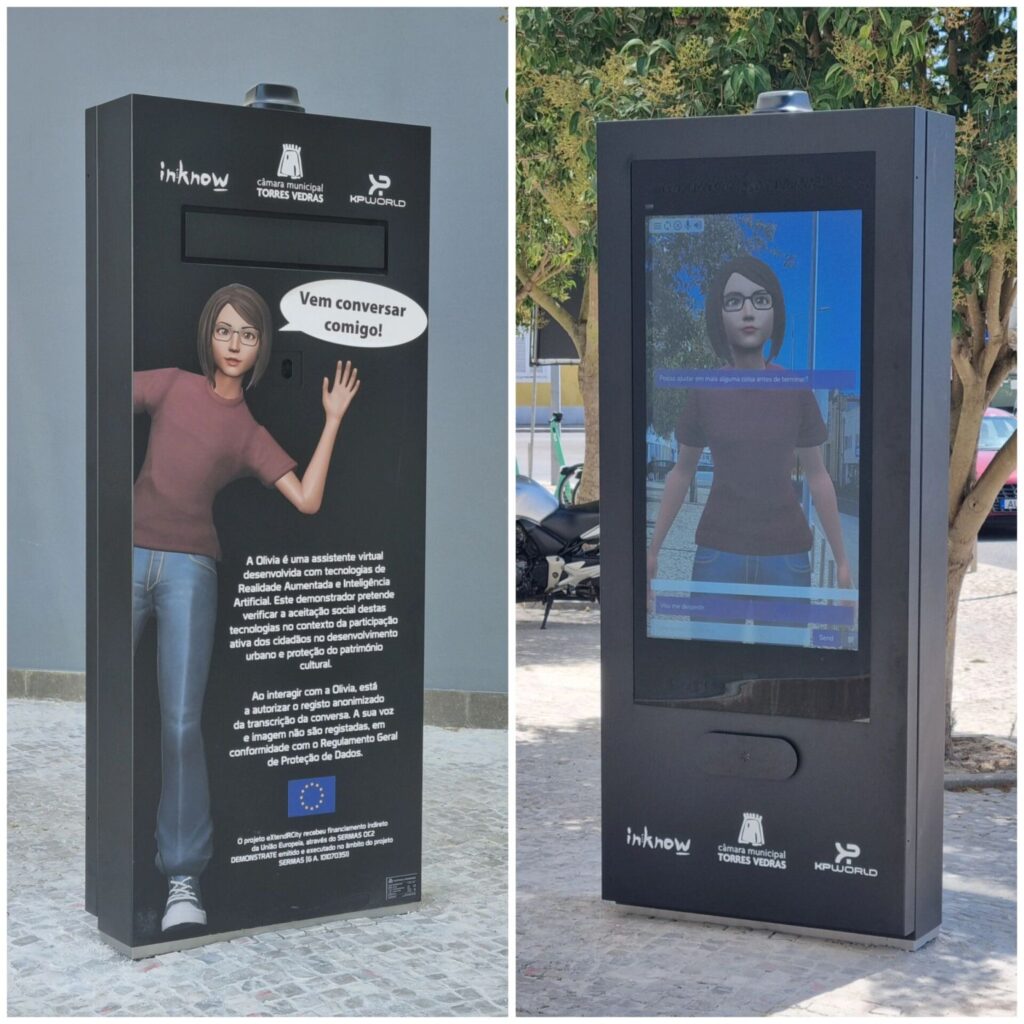We sat with the team of the eXtendRCity about their Open Call 2 pilot, where they developed Olivia, a socially acceptable avatar, created to support the citizens from Torres Vedras.
1. Now that we reached the end of your pilots, what was the single biggest challenge you faced, and what was the most rewarding aspect of the experience?
The project underwent an extensive process of integrating all the necessary components – the SERMAS toolkit, OpenAI’s ChatGPT, and our proprietary XRCity Decision Support System – to create a socially acceptable XR experience for citizens engaging with our avatar, Olivia. The goal was to gather valuable insights to support urban planning in the city of Torres Vedras. For the team, it was especially rewarding to see people of all ages interact with Olivia in such a friendly manner, and to witness how the collected information proved genuinely useful for the municipality.
2. Looking back at the milestones we discussed, which were successfully met, and which fell short? For those not fully achieved, what were the primary obstacles encountered? Are you happy with the final results?
The XRCity partners are very happy with the final outcome: an operational avatar engaging directly with people on the streets of Torres Vedras. While the project successfully met each of its four milestone targets on time, the progress in between was far from linear. The integration of the toolkit required a considerable number of iterations with the support team from SERMAS. Furthermore, the monthly meetings with the SERMAS mentors proved instrumental, serving as checkpoints to identify critical issues and to decide how best to direct our efforts.
3. To what extent do you feel the pilot results aligned with your initial expectations?
In short: absolutely. While there were many doubts at the outset about the final performance of the proposed pilot, and there is still significant room for improvement in making the experience with Olivia as fluid and friendly as possible, the outcome exceeded expectations. Observing people interact—sometimes patiently—with Olivia, and witnessing the mutual benefits of those interactions, has clearly gone beyond what we initially anticipated.
4. What are the immediate next steps and long-term ones for your pilots?
This one is easy! Our immediate next step is to make Olivia available everywhere—at every corner—expanding beyond urban planning to any context where meaningful interactions between the public and organizations can create mutual benefits. In the longer term, we envision Olivia becoming a versatile platform for citizen engagement, adaptable to different domains and communities. It is also important to stress our commitment to GDPR compliance, ensuring full respect for citizens’ privacy and the responsible use of all collected data.
5. Thinking about the whole process of implementation of your solution, what it the ‘best practice’ you would suggest to other people willing to use the SERMAS toolkit to implement their VR solutions?
This feedback is directed to both users and developers of the SERMAS toolkit. We recommend starting with a bottom-up approach: activate only the functionalities needed for a particular application and evaluate, step by step, the performance cost of each feature. It is important to distinguish between critical functions and nice-to-have ones. Being conscious of this distinction is key to ensuring a smooth and efficient use of the toolkit.

